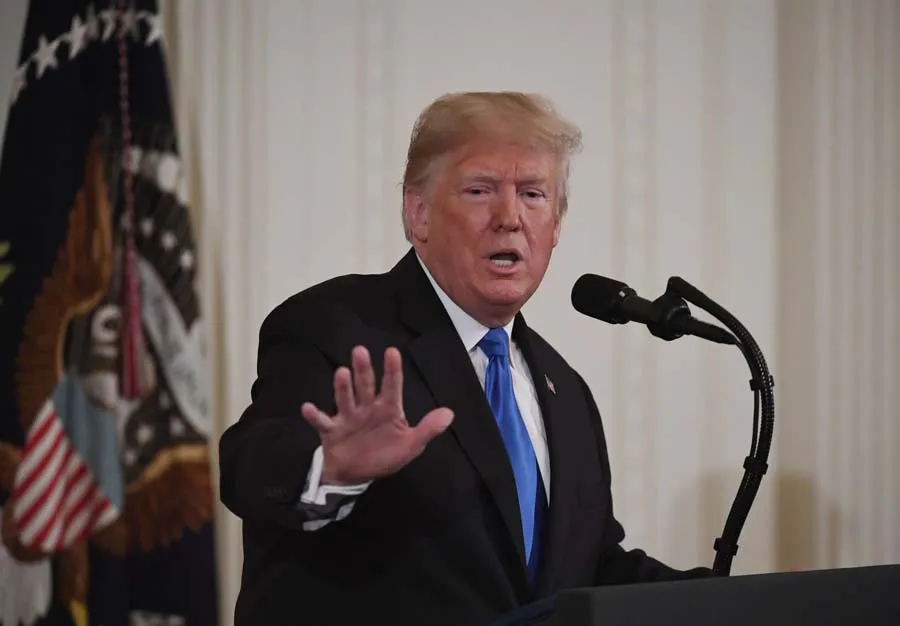After the Taliban imposed restrictions on girls attending college in Afghanistan, a young woman named Bahara Sager decided to go to the United States to pursue higher education.
Bahara (21) practiced English for eight hours daily for several years and finally received an offer to study Business Administration at a private liberal arts college in Illinois.
Bahara had hoped to arrive in the US this year, but her dream was once again unfulfilled due to President Donald Trump’s travel ban.
Bahara said, “You feel like you are finally moving towards your dream, but then something happens that makes it seem like everything is over.”
The Trump administration has imposed travel bans on citizens from 19 countries, and these restrictions have affected thousands of students, many of whom feel helpless after investing significant time and money to come to the US.
Some foreign students are unable to come this year despite receiving college admission offers because additional scrutiny during the visa process is causing delays.
Due to the administration’s broad immigration actions and the sudden termination of some students’ ‘legal status,’ other students are reconsidering coming to the US.
Students bear the brunt of the travel bans.
Last year, the State Department issued more than 5,700 F-1 and J-1 visas to people from the 19 affected countries between May and September. These visas are used by foreign students and researchers.
More than half of the approved visas were issued to citizens of Iran and Myanmar.
Full travel bans have been imposed on citizens of 12 countries in Africa, Asia, Western Asia, and the Caribbean regions.
Due to this ban, most people cannot obtain visas. However, some citizens from banned countries, such as green card holders, dual citizens, and some athletes, are exempt.
Strict restrictions also apply to student visas in seven other countries.
Afghanistan
Afghanistan is a historically significant crossroads of civilizations, with a rich cultural heritage shaped by empires like the Persian, Greek, and Mughal. It is home to ancient sites such as the Buddhas of Bamiyan and the Minaret of Jam, reflecting its diverse Buddhist and Islamic history. The country has faced extensive conflict in recent decades, including the Soviet invasion, civil war, and the Taliban insurgency.
United States
The United States is a North American nation founded in 1776 after declaring independence from Great Britain. Its history spans from colonial settlement and revolution to becoming a global superpower, shaped by westward expansion, civil war, and large-scale immigration. Culturally, it is a diverse melting pot whose global influence is felt in areas such as technology, entertainment, and democratic ideals.
Illinois
Illinois is a Midwestern U.S. state, historically significant as the 21st state to join the Union in 1818. It is most famous for its largest city, Chicago, a major global hub for finance, culture, and industry, and its state capital, Springfield, which was the longtime home of President Abraham Lincoln.
Trump administration
The Trump administration refers to the U.S. executive branch under President Donald J. Trump from 2017 to 2021. It was a historically unconventional presidency, marked by a populist “America First” agenda, significant tax reforms, and a unique approach to domestic and foreign policy conducted heavily through social media. Its tenure was also defined by two impeachments and a focus on immigration restriction, deregulation, and conservative judicial appointments.
State Department
The United States Department of State is the federal executive department responsible for the nation’s foreign policy and international relations. It was established in 1789, making it the first executive department formed following the ratification of the U.S. Constitution. Its headquarters, the Harry S Truman Building in Washington, D.C., serves as the central hub for American diplomacy.
Iran
Iran is a country with a rich history as the heart of the ancient Persian Empire, which dates back over 2,500 years. It is home to numerous UNESCO World Heritage Sites, including the magnificent ruins of Persepolis and the stunning Islamic architecture of Isfahan’s Naqsh-e Jahan Square. Modern Iran is a theocratic republic, but its culture remains deeply influenced by its pre-Islamic Zoroastrian heritage and its long history of poetry, art, and scholarship.
Myanmar
Myanmar, also known as Burma, is a Southeast Asian nation with a rich history as the center of powerful Buddhist empires like Pagan. Its cultural identity is deeply intertwined with Theravada Buddhism, exemplified by the thousands of ancient temples and pagodas that dot its landscape, most famously in Bagan. The country endured decades of military rule before a recent, fragile transition towards democracy.
Africa
Africa is a vast continent with a rich and complex history as the cradle of humankind, where some of the world’s earliest civilizations emerged. It is home to an immense diversity of cultures, languages, and historic sites, from the ancient pyramids of Egypt and the kingdoms of West Africa to its numerous natural wonders and vibrant modern cities.






